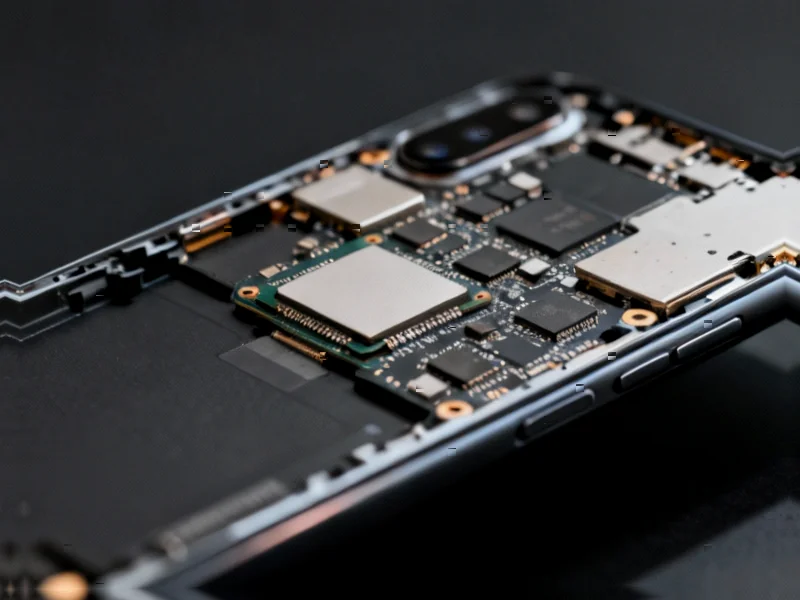According to SamMobile, early benchmark data suggests Samsung’s upcoming Exynos 2600 may outperform Qualcomm’s Snapdragon 8 Gen 5 in CPU performance tests, though it appears weaker than the higher-tier Snapdragon 8 Elite Gen 5 variant. The preliminary Geekbench results show the Elite model scoring approximately 3,800 points in single-core and 12,100 points in multi-core CPU tests, positioning it as the performance leader among the upcoming mobile chipsets. However, the report emphasizes that these are early indications and definitive conclusions must wait until actual devices featuring these processors reach consumers. This potential performance reversal could signal a significant shift in the mobile processor landscape.
Table of Contents
The Samsung Comeback Story
What makes these early results particularly compelling is Samsung’s recent history with Exynos processors. After years of playing catch-up to Qualcomm’s Snapdragon series and facing criticism for efficiency and thermal management issues, Samsung made the strategic decision to temporarily pause flagship Exynos development in key markets. This potential performance leap suggests Samsung has been working aggressively behind the scenes, likely leveraging their advanced semiconductor manufacturing capabilities and architectural improvements. The timing is crucial as Samsung seeks to reduce dependence on external suppliers and regain control over their flagship device performance narrative.
Broader Market Implications
If these performance gains materialize in shipping devices, the impact could extend far beyond Samsung’s own Galaxy lineup. A competitive Exynos 2600 would provide smartphone manufacturers with a viable alternative to Qualcomm’s dominant position in the Android ecosystem. This could lead to increased competition on pricing, features, and innovation across the entire consumer electronics market. For consumers, this translates to better value and more choice, while for manufacturers, it means reduced reliance on a single supplier for premium mobile processors.
The Technical Reality Check
While early benchmark numbers are promising, the real test comes in real-world usage scenarios where factors like thermal management, power efficiency, and sustained performance matter most. Samsung’s previous Exynos processors often showed competitive peak performance but struggled with thermal throttling and battery efficiency compared to their Snapdragon counterparts. The company will need to demonstrate significant improvements in these areas to convince both consumers and manufacturers that the Exynos platform has truly matured. Additionally, software optimization and developer support will be crucial factors in determining whether these theoretical performance gains translate to tangible user benefits.
The Hyderabad Connection
Interestingly, Samsung’s R&D center in Hyderabad has become increasingly important to their semiconductor development efforts, contributing to both processor design and software optimization. This growing technical expertise in India’s technology hubs represents a strategic shift in how global tech companies are leveraging talent pools beyond traditional centers like Silicon Valley. The success or failure of the Exynos 2600 could have significant implications for Samsung’s broader semiconductor strategy and their ability to compete in the increasingly competitive mobile processor market.
Realistic Outlook and Industry Impact
The mobile processor competition between Samsung and Qualcomm represents more than just technical rivalry—it’s about control over the entire smartphone ecosystem. A successful Exynos 2600 could potentially reset the balance of power in the Android space, giving Samsung greater leverage in negotiations and potentially opening the door for other manufacturers to license Exynos technology. However, Qualcomm isn’t standing still, and their Snapdragon Elite variants suggest they’re prepared to maintain their performance leadership position. The coming year promises to be one of the most competitive in recent memory for mobile processors, with both companies pushing the boundaries of what’s possible in smartphone performance.
Related Articles You May Find Interesting
- The Silent Revolution: Why Async Communication is Reshaping Microservices
- Fintech’s $10M Lifeline for Food Stamp Crisis
- The AI Authorship Crisis: Why Human Judgment Needs Digital Verification
- Advantech’s Edge AI Leap: How NVIDIA Jetson Thor Is Reshaping Robotics and Healthcare
- Critical WordPress Plugin Flaws Expose 10,000 Sites to Takeover



